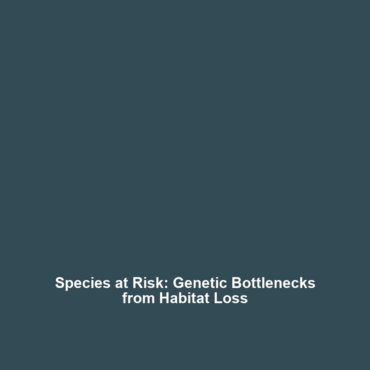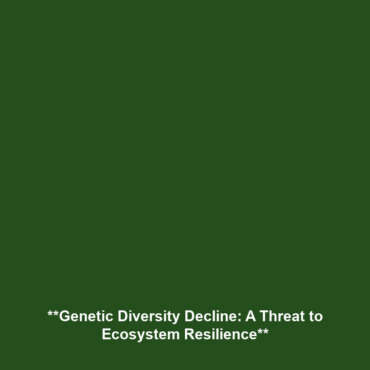“`
Examples of Species Facing Genetic Bottlenecks Due to Habitat Loss
Deforestation and biodiversity loss are critical environmental challenges that dramatically affect wildlife populations across the globe. When habitats are fragmented or destroyed, many species experience genetic bottlenecks, which diminish genetic diversity and reduce resilience to environmental changes. This article explores specific examples of species that are confronting this genetic crisis due to increasing habitat loss, emphasizing the significance of maintaining biodiversity in the face of deforestation.
Key Concepts of Genetic Bottlenecks
The concept of genetic bottlenecks is vital for understanding the effects of deforestation and biodiversity loss. Genetic bottlenecks occur when a population’s size is significantly reduced, leading to a loss of genetic variation. This phenomenon can result from a variety of factors associated with habitat loss:
- Habitat Fragmentation: Isolates populations and limits gene flow between groups.
- Population Declines: Directly decrease the number of individuals, reducing genetic diversity.
- Inbreeding: Occurs more frequently in small populations, leading to increased chances of harmful genetic traits.
Applications and Real-World Uses
Understanding the impact of genetic bottlenecks due to habitat loss has significant real-world applications that can aid in conservation efforts. The study of these phenomena informs various wildlife management strategies:
- Genetic Monitoring: Used to assess the health of endangered populations.
- Conservation Genetics: Helps identify critical breeding pairs to enhance genetic diversity.
- Restoration Ecology: Guides reintroduction programs by choosing genetically viable individuals.
Current Challenges in Studying Genetic Bottlenecks
There are several ongoing challenges related to the study of genetic bottlenecks in the context of habitat loss:
- Data Limitations: Insufficient data on many obscure species makes it hard to gauge genetic health.
- Funding Constraints: Limited resources for extensive genetic studies hinder research progress.
- Logistical Issues: Difficulty in accessing remote or preserved habitats for sampling.
Future Research and Innovations
Looking ahead, several innovations and research avenues could enhance our understanding of genetic bottlenecks and biodiversity loss:
- Next-Generation Sequencing: Allows for extensive genetic analysis of even small populations.
- Gene Editing Technologies: May be used to introduce genetic diversity in critically endangered species.
- Environmental DNA (eDNA) Analysis: Facilitates monitoring of species presence without the need for direct observation.
Conclusion
In summary, species facing genetic bottlenecks due to habitat loss are increasingly common as deforestation and biodiversity loss continue to threaten ecosystems. It is crucial to understand these dynamics to implement effective conservation strategies. By advancing research and embracing innovative technologies, we can work towards preserving our planet’s biodiversity. For more insights into the effects of habitat loss on species survival and successful conservation strategies, explore our other articles.
“`
This structured article covers the topic of genetic bottlenecks due to habitat loss, integrating SEO best practices while maintaining a focus on informative and engaging content.

